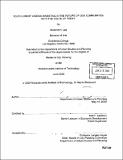Youth credit unions : investing in the future of our communities with the youth of today
Author(s)
Lee, Vivienne H., 1976-
DownloadFull printable version (5.773Mb)
Other Contributors
Massachusetts Institute of Technology. Dept. of Urban Studies and Planning.
Advisor
Karl F. Seidman.
Terms of use
Metadata
Show full item recordAbstract
Youth credit unions have emerged in the United States as a relatively new and innovative community youth development program. It is a twist of youth development and financial literacy. The basic idea of a youth credit union is to develop financial and leadership skills of young people through youth savings accounts, financial literacy education, asset development opportunities, and professional/personal development skills. These services are often administered by community development credit unions that partner with schools, faith-based institutions, or local community development organizations. The concept behind youth credit unions is to provide young people with the skills and wealth necessary to mature into healthy and financially self-sufficient adults. This thesis discusses three case studies of youth credit union programs in Ithaca, New York, Seattle, Washington, and Marks, Mississippi and applies the lessons learned from these programs to evaluate the effectiveness of their program designs. The cases were assessed based on four key considerations: 1) How many youth are impacted or benefiting from the program? 2) Are the programs servicing underserved or underrepresented groups? 3) Is there a certain scale that needs to be achieved to make this type of program worthwhile for the youth and the community development credit union? 4) Do youth credit unions effectively address financial literacy within the activities of the program? The findings resulted in recommendations of basic criteria necessary for an effective youth credit union program and support the need for additional research to evaluate the impacts of this program on improving the personal, professional, and financial health of young adults.
Description
Thesis (M.C.P.)--Massachusetts Institute of Technology, Dept. of Urban Studies and Planning, 2003. Includes bibliographical references (leaves 103-105).
Date issued
2003Department
Massachusetts Institute of Technology. Department of Urban Studies and PlanningPublisher
Massachusetts Institute of Technology
Keywords
Urban Studies and Planning.